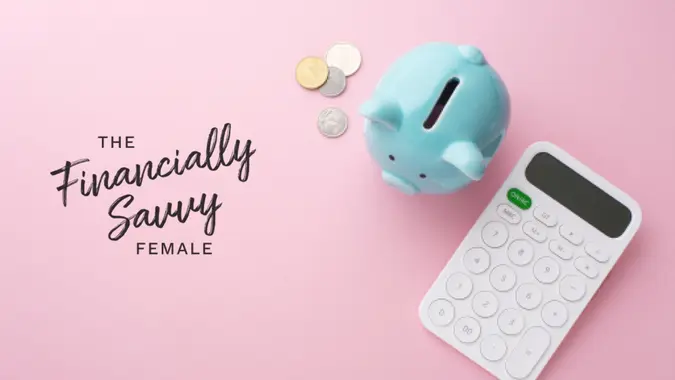5 Unconventional Ways Middle-Class Earners Can Save an Extra $300 per Month

Commitment to Our Readers
GOBankingRates' editorial team is committed to bringing you unbiased reviews and information. We use data-driven methodologies to evaluate financial products and services - our reviews and ratings are not influenced by advertisers. You can read more about our editorial guidelines and our products and services review methodology.

20 Years
Helping You Live Richer

Reviewed
by Experts

Trusted by
Millions of Readers
If you’re on a middle-class income, you know a few hundred extra dollars padding your bank account could make a huge difference for both your financial goals and your peace of mind. But you’ve already cut all the subscriptions you don’t use and switched to generic brands for your groceries. Heck, you’re even shaking down your couch cushions for change as if they lost a bet to you. Now, to save hundreds every month, it’s time to think beyond the usual advice and adopt an unconventional approach.
GOBankingRates decided to go off the beaten path to find creative ways to save hundreds — maybe even up to $300 — every month. We talked to some experts and did our own research to uncover less obvious ways middle-class earners can cut costs and save more each month.
1. Find Ways To Go Without Your Car
Having a car seems like a staple of middle-class life — and the thought of going without one feels like a major disruption. However, cars can be a significant drain on your finances, from monthly loan or lease payments to insurance, gas and maintenance.
That’s why Michael LaCivita, a certified financial planner with Domain Money, suggests biking, walking or taking public transit to work if you live in a city.
“If you can go without a car, you can avoid a car payment, which adds hundreds of dollars per month to your budget,” he said.
Even if you can’t go completely car-free, reducing your usage — for instance, by carpooling, cutting down the number of cars in your household, or using a rideshare for short trips — can still help you save on gas, parking and maintenance costs.
2. Perform Minor Home Repairs
While you shouldn’t attempt major home repairs — not only could you cause more expensive damage, but you could also end up with medical bills — LaCivita suggests that teaching yourself some basic fixes can help you save a surprising amount every month.
“Minor repairs around the house can usually be accomplished with YouTube and a little patience,” he said. “Labor costs for a skilled tradesperson are often very high due to their demand and expertise.”
For example, learning to patch drywall, fix a leaky faucet or replace a light fixture can easily save you $100 or more per repair compared with hiring a professional. Over time, that adds up to hundreds in savings.
3. Stop Overspending on Wellness Products
Of course, you want to look and feel your best every day — and that urge can compel you to spend big on health and wellness products.
But Melanie Musson, an insurance and finance expert at Quote.com, cautions that many people overpay for supplements, skincare and gadgets that don’t make a meaningful difference. She encourages you to assess how each product truly makes you feel — not what the advertising promises.
“It’s so easy to justify overspending when it’s for your health. If the product actually changes your life like you think it will, you should be a loyal, lifelong customer,” she said. “But if you feel and look the same now as you did before taking the product, you’re overspending on it.”
A simple audit of recurring health or beauty purchases, like protein powders, subscription vitamins or expensive serums, could reveal $50 to $100 in potential monthly savings without affecting your well-being.
4. Buy High-Quality Versions of Items You Use Frequently — Even if They’re Pricier
Spending more money on an item might sound counterintuitive when you’re trying to save, but Musson wants you to consider it this way: “Buying quality items that you use regularly really does pay for itself,” she said.
To illustrate her point, she gives the example of an avid camper: If you go camping often, a high-end, easy-to-assemble tent that keeps you warm, dry and safe is worth the expense. You’ll save hundreds by not having to replace it or patch it every few times you go camping.
Musson extends the idea to things you need consistently, like winter gear if you live in a cold climate. She says it makes sense to spend a little more on durable items that will last for years, rather than having to replace worn-out gear every year. Of course, if your exposure to snow is limited to occasional visits or rare weather events, there’s no need to spend big on high-end products.
5. Motivate Yourself With Discretionary Funds
Musson knows many people think they need to eliminate discretionary spending when trying to save hundreds of dollars each month. Still, she challenges that assumption.
“Give yourself discretionary money. You might think it would be better to eliminate discretionary spending from your budget, but having no allowance for buying something enjoyable makes budgeting feel like drudgery,” she said. “It’s hard to stay motivated when you feel like you can’t ever have fun.”
This isn’t a license to spend freely whenever it suits you. It’s about setting aside a small, intentional amount that makes budgeting feel rewarding rather than restrictive. For example, allocating $50 for guilt-free spending on coffee, entertainment or small luxuries can make your savings plan sustainable.
By building pleasure into your plan, you’re more likely to stick with it — which can help you save hundreds each month in the long term.
 Written by
Written by  Edited by
Edited by 

























